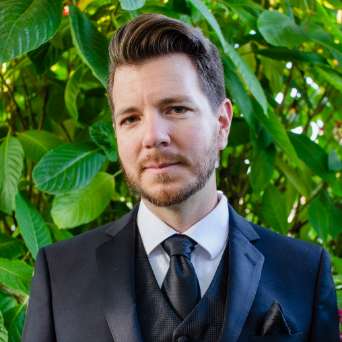Seeing a classical concert at the Hollywood Bowl is always an event. While (to put it kindly) it is not the ideal acoustic for classical music, the iconic venue is surrounded by glowing hills and always seems to have perfect weather. On Tuesday evening, the Los Angeles Philharmonic joined with Michael Tilson Thomas for Mahler’s “Resurrection” Symphony to open the classical concert series under ideal Southern California conditions. While the relatively well-behaved Bowl audience was attentive and the amenities luxurious (sushi, wine bar, and burgers), the music was the big draw for an hour and a half.
The LA Phil played with their expected refinement and verve. While ensemble was occasionally not perfectly in sync, the supremely talented band showed what a world-class orchestra can sound like in an idyllic setting. The brass was particularly authoritative, the woodwinds distinctively musical. The strings, led by concertmaster Martin Chalifour, were radiant.
Tilson Thomas’ reading was at times enlightening, but occasionally puzzling. He wasn’t wont to fuss or linger, but when he did it could be awkwardly detached. The first movement was easily the most successful of the evening. It flowed statelily, segueing into the the iterations of the secondary theme in a manner that was tender yet not dawdling. But when the opening sixteenths returned followed by the menacing tam-tam smash, the movement really took off and the arch was enthralling. It was a furious conclusion capped off by the final descending eighth-notes that thrillingly accelerated towards the final three thuds.
The ensuing movements often lacked such dramatic magnetism. The second-movement Ländler was wistful, not sappy, the contrasting motive not particularly menacing. The scherzo was sardonic in character, accentuated with hyper-articulation in the woodwinds for fine effect. The secondary theme was brash and quickly paced, and transitions were not drawn out. Tilson Thomas did his best to minimize the contrast between each theme and it came across as more brash than anything. While the contrast in character and tempos between the second and third movement made for a well-received effect, the inner arching of each was not particularly illuminated.
Sasha Cooke sang the fourth movement, “Urlicht”, with a ravishingly beautiful mezzo voice. Her instrument is rich in color and gloss while maintaining a pointed edge. Unfortunately, the movement seemed to bog down a bit too much, which affected her line. She had to take some uncustomary breaths which, while gracefully done, were a bit distracting. The tempo also had the same affect on an otherwise breathtaking oboe solo by Marion Arthur Kuszyk.
The final movement was a puzzling amalgam of what had come before. Tempos were often brisk, as the opening was, but now the most sparse and delicate transitions seemed to come to a standstill. The transitions from the “Wieder breit” to the timpani crescendo and ensuing “Allegro energico” never seemed to really take flight. The lack of build-up seemed to keep them a more earthbound. The “Great Call”, probably due in large part to acoustics, seemed to sink between solos. In fact, there was an unavoidable stoppage right before the outstanding flute solo of Catherine Ransom Karoly due to a helicopter flying low.
The Los Angeles Master Chorale sang with their customary exquisite sensitivity, shimmering tone, and outstanding diction. Soprano Kiera Duffy sounded unsupported in her first two phrases, but she managed to rectify that to turn in a fine addition. This finale was relatively brisk and, while ample in volume, lacked majesty. It was more defiant than optimistic.
Obviously, this music (particularly the finale) digests so much better in an intimate concert hall. The pregnancy of Mahler’s most delicate moments can fall flat in a venue such as the Hollywood Bowl. That said, the amplification at the Bowl was much more satisfactory than I remember it. The dynamic range was wide and natural sounding, but there were some issues. Notably, the soloists were over-amplified for my taste, and the choral balance was problematic. The final organ, while impressive, was probably a bit more thunderous than most realistic acoustic settings would have it.
Yet while the performance was occasionally frustrating, Mahler at the Bowl is a wonderful paradox of ideals. Even the most surly cynic could not hear the music of the “Auferstehen” while being grazed by the cool breeze and not be moved to celebrate sharing music in such a place.
Enjoy the experience that is the Hollywood Bowl and go for it – order some fries with your Mahler.


